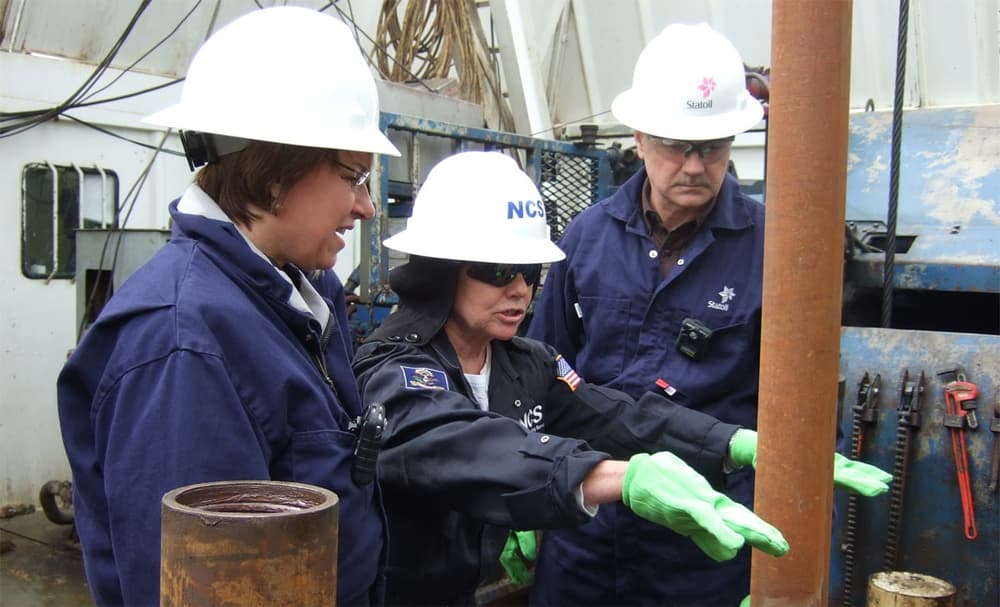Speakers at CERAWeek were more than 85 percent male, as organizers declined to join forces with female-focused energy event.
When one of the largest oil conferences in the Americas held a networking event concentrating on “the prominent role women play” in the industry, the first speaker was a man – so was the second, and the third. Eventually, a woman was able to get a word in.
To hear women do more than a quarter of the talking, you had to go 16 miles down the road from the CERAWeek conference in central Houston to a separate event. It covered many of the same topics, but most of the speakers were female.
Twin oil conferences, separated by gender, are emblematic of an industry that’s had trouble bringing attracting and keeping women. No major oil company has ever had a female CEO and 80 percent of all workers in the sector are men.
“In an ideal world, the global reach of this industry would be matched by an equally diverse workforce,” Facebook’s Chief Operating Officer Sheryl Sandberg said in a videotaped keynote address at the HERWorld conference on the western fringes of Houston. “Unfortunately, that’s not yet the case.”
CERAWeek, which started almost 40 years ago, is attended by just about every major oil CEO and mirrors the industry’s lack of diversity. More than 85 percent of the speakers at the conference this year were men, according to the event program.
Attempts to make it more inclusive have hit stumbling blocks. The CERAWeek women’s networking event – where Exxon Mobil’s Vice President Emma Cochrane waited to speak until after organizer IHS's Vice Chairman Dan Yergin, American Petroleum Institute President Jack Gerard and Secretary of the Interior Ryan Zinke – prompted complaints from some attendees.
“A man is speaking. He’s followed by another guy. #letwomenspeak,” tweeted Ellen Chang, a journalist at The Street.
HERWorld was started in 2016 to celebrate International Women’s Day. Spearheading the work is Katie Mehnert, the founder of women’s energy organization Pink Petro, and a former employee of Shell and BP, where she focused on culture-change initiatives.
Pink Petro aims to fix the “systemic” gender gap in the industry by providing women with chances to network and learn more about the business. For example, it broadcasts HERWorld online, and sets up viewing parties at companies like Halliburton.
Mehnert told Bloomberg that the clash of schedules wasn’t intentional – she didn’t realize until after her conference had become well-established that it coincided with CERAWeek. The event attracts high-profile female speakers including Facebook’s Sandberg – who wrote a best-selling book about women in the workplace – but is barely a 10th the size of CERAWeek, based on attendance figures provided by spokespeople from both conferences
The events happening at the same time means participants and the media have to choose between them. Mehnert had discussions with CERAWeek’s organizer, IHS, about the possibility of teaming up to boost both events but the talks didn’t result in a partnership, she said, without going into further details.
“We don’t let everyone in,” said James Rosenfield, senior vice president at IHS and co-chairman of CERAWeek, when asked why Pink Petro was not able to participate. “Some of our partners who are sponsoring and who are part of the whole thing here, expressed specifically they were concerned about that organization” drawing people away from CERAWeek.
HERWorld’s atmosphere was more casual than CERAWeek – with upbeat music and male attendees opting for slacks rather than suits – but the agenda was serious. Panels reflected the exact discussions that CERAWeek thrives on: the energy transition and technology.
Executives from Shell, Chevron and others passionately encouraged women to stick together, while also highlighting the scale of the challenge. Gerbert Schoonman, Hess Corp.’s vice president of global production and Lean In Energy’s first male board member, noted that gender parity in the workplace won’t happen in our lifetimes – the same conclusion reached in the World Economic Forum’s 2017 Global Gender Gap Report.

